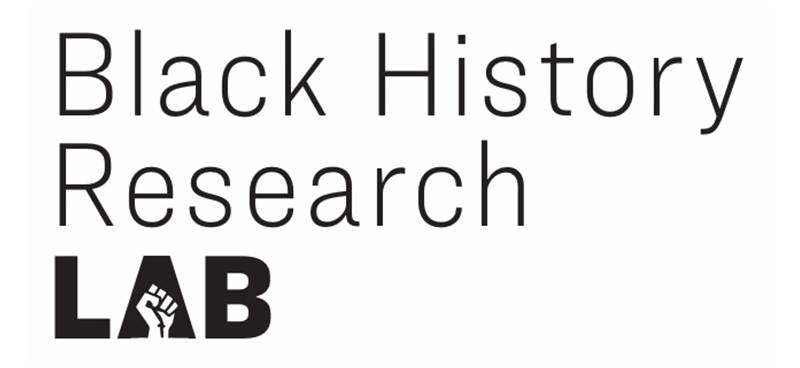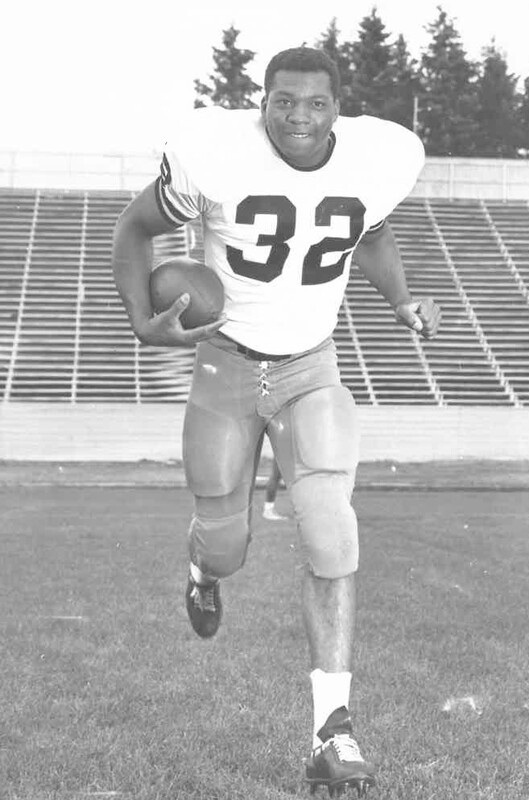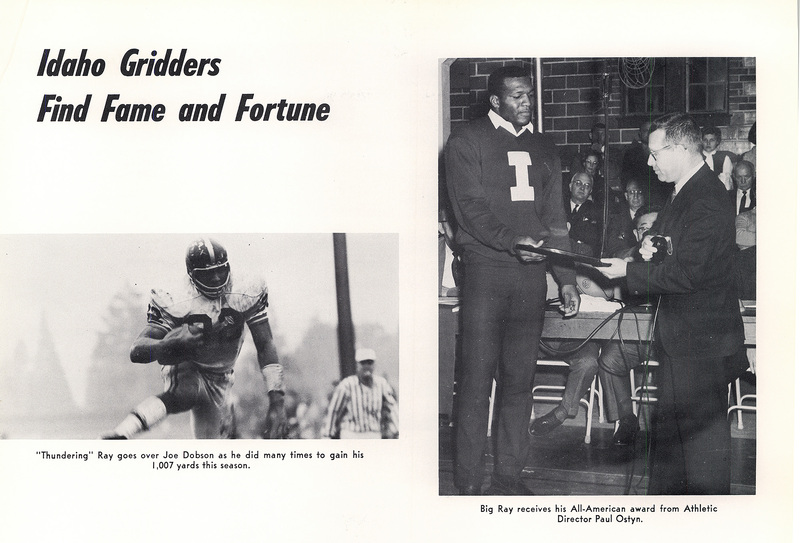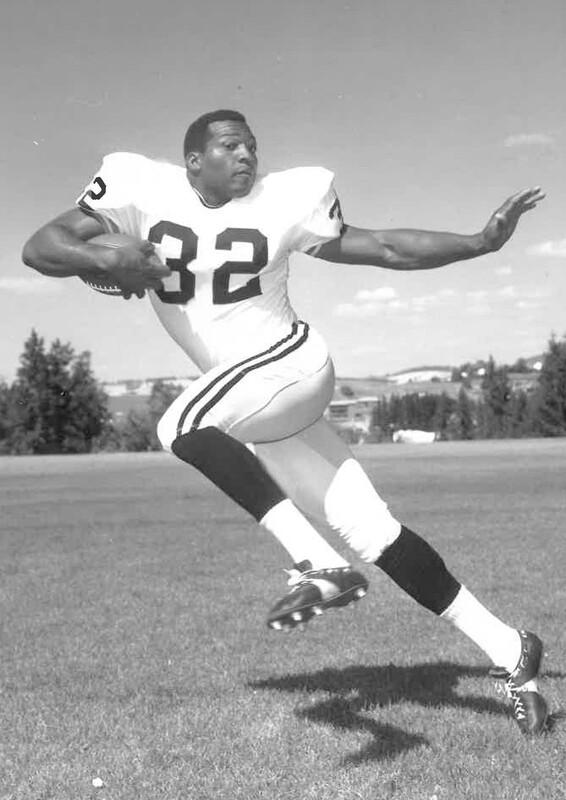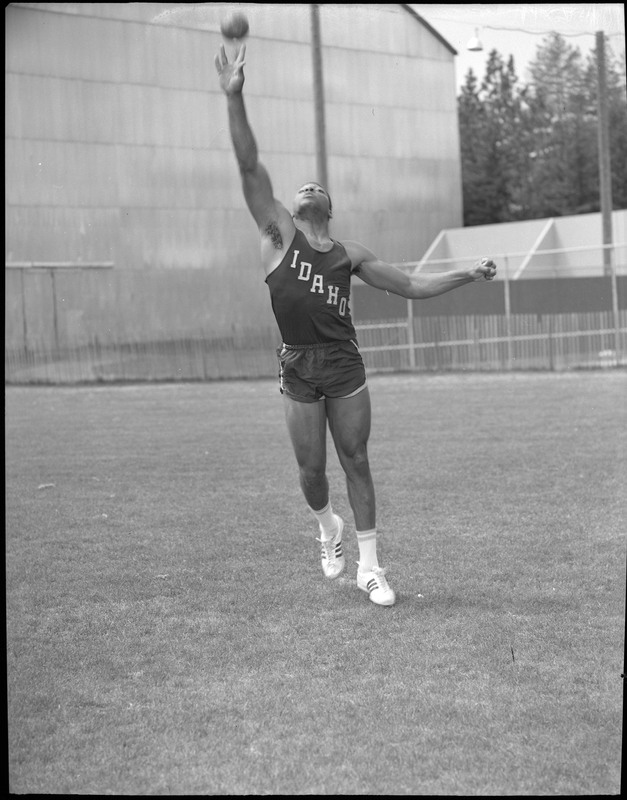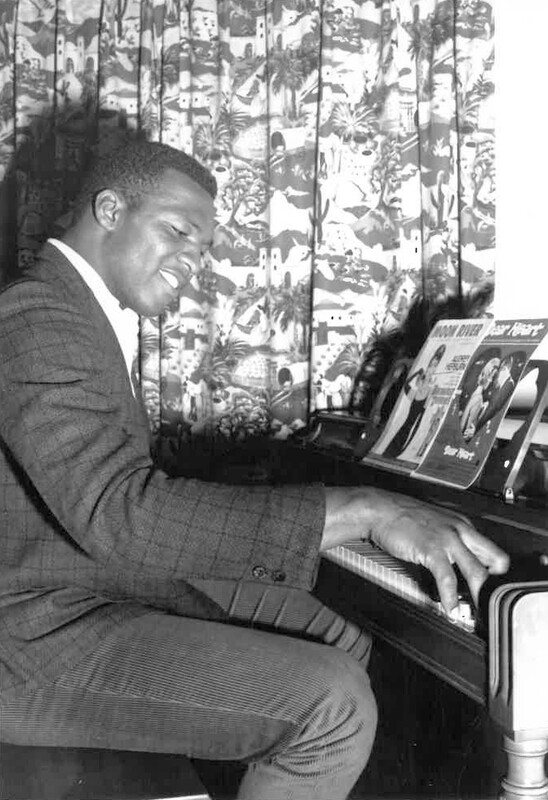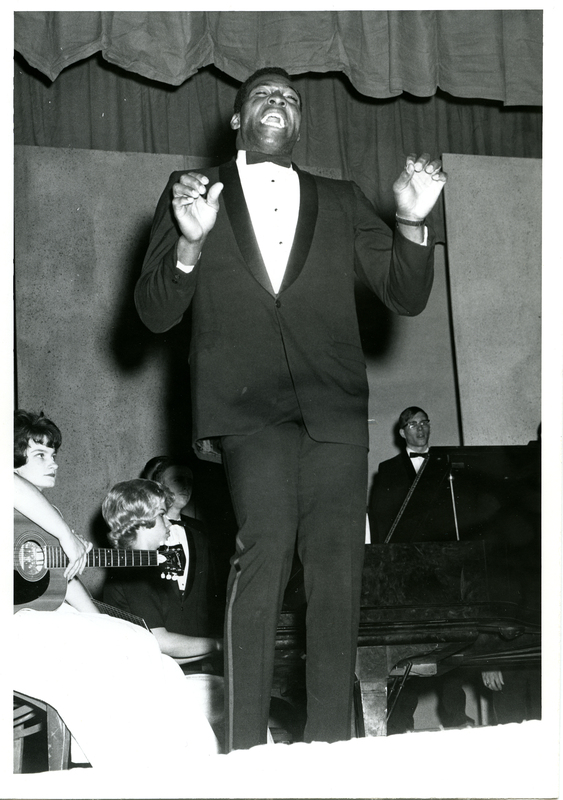Ray “Thunder Ray” McDonald
by Brody Gasper
Black history at the University of Idaho can be read through the stories of students who attended the university and the faculty that worked here. Their experiences shape and highlight Black progress at the University of Idaho and in the nation. Ray McDonald, an All-American fullback and Music major for the University of Idaho from 1963 to 1966 is one individual whose story helps to illuminate these histories.
Ray McDonald was born in Dallas, Texas on May 7, 1944, to Andrew Wilson and Bessie Mae Walker McDonald. He was raised in a segregated neighborhood called McKinney, one of the larger Black suburbs in Texas at the time. Mcdonald spent his formative years in McKinney and then moved with his family to Alamogordo, New Mexico at the age of fourteen. He attended his freshman and sophomore years of high school in New Mexico.
The family moved to Caldwell, Idaho when he was a junior in high school. McDonald attended Caldwell Idaho High School, becoming a three-sport star and the only Black athlete on Caldwell Cougars sports teams. He set records in football, basketball, and track & field and became known as a rising star in the eyes of recruiters. In addition to his athletic career at Caldwell, McDonald participated in the school choir and played the piano, beginning his lifelong participation in and passion for music.1
In 1963, after his graduation from Caldwell High School, McDonald enrolled at the University of Idaho and registered for the mandatory freshman football team. In the same year, his family also moved from Caldwell to Lewiston, Idaho to be closer to their son.
His freshman football year was a success, as McDonald helped lead the Vandals football team to victory over both the University of Washington (32-18) and Washington State University (36-0). His sophomore year was similarly successful, although he missed his first three games due to an Achilles tendon tear he suffered after playing a game of pick-up basketball in the summer. This injury would be a major hurdle throughout the rest of his football career.
McDonald rose to national fame during his junior and senior years. He led the Vandals to successful seasons both years and set many records at the university, some of which still stand today. He also earned the nickname “Thunder Ray” during those years and was named an All-American in both 1965 and 1966.
During his collegiate career, McDonald rushed for 2,916 yards and scored 39 touchdowns. During his Senior season, McDonald averaged 132.9 yards per game, which still stands as the record for average yards per game to this day, and overall, he averaged at least 100 yards rushing per game throughout his career. In his final game, McDonald went out with a bang, rushing for 255 yards, which still ranks fourth in the Idaho record book for most rushing yards in a single game.
On top of his incredible football performance, McDonald was also a track star. He was the Big Sky champion in the shot-put, a two-time Big Sky champion in the discus, and a two-time All American. McDonald ran the 120-yard hurdles as a national hurdler for the Vandals track team and participated in the long jump as well.
McDonald’s teammates from his years at UI had great respect for him. Joe McCollum, a former Vandal wide receiver and friend during Ray McDonald’s early college years, said, “He was a beautiful athlete, and on top of that, a beautiful person. There were very few Blacks up here at the time, but Idaho really embraced Ray.” 2 Steve Burrato, a former Vandal offensive lineman and now a Canadian football coach, said that McDonald “..was more of a leader by example. He was such an extraordinary athlete he had the respect and admiration of everybody on the team.” 3 Mike Monahan, a former quarterback for the Vandals football team, commented on McDonald’s impressive performance despite his injury saying that “Ray never was able to truly show what he could’ve done because he limped the whole time he played, I don’t suspect the doctors back then did a very good job. He led the nation in running and he limped.” 4
Riding his collegiate career success and following his graduation in 1966, McDonald was drafted 13th by the Washington Redskins in the first round of the 1967 NFL draft. His professional football career, however, was less notable than his time with the Vandals. He was only able to play a few games during his first season and only one his second due to his Achilles tendon injury.
McDonald also endured hardships due to questions about his sexuality. While he never publicly come out as gay, many of his teammates assumed he was due to various incidents, including his being arrested in 1968 after being caught having sex with another man in public. This led to aggravation from teammates and others. A.D. Whitman Jr., a former running back for the Washington Redskins, said people would make jokes at McDonald’s expense: “He was just a nice, innocent kid. I felt sorry for him because they took advantage of him in certain situations.” 5 Eventually, due to a variety of factors including his Achilles tendon injury, his experience of homophobia in the NFL, and his being late to a meeting with famed coach Vince Lombardi, McDonald was effectively forced out of the NFL in 1969.
With his football career over, McDonald first moved back to Texas, but evenutally returned to Washington, D.C. to further his passion for music, enrolling at both the University of Washington D.C. (UDC) and Howard University. McDonald was a talented singer and pianist; he had majored in music during his time at the University of Idaho and even sang with the Vandaleers. After furthering his education at these UDC and Howard, McDonald became a music teacher at the Patricia Roberts Harris Educational Center in Washington D.C. and the ‘Minister of Music’ at the Christ Holy Tabernacle Church. 6
Tragedy struck in 1986 when McDonald was stabbed by one of his former lovers, suffering a punctured lung. While in the hospital, he also learned that he had contracted the human immunodeficiency virus (HIV). He never notified his brothers about his sexuality, but eventually he did tell his sister-in-law, Phyllis McDonald, who later said, “It was sad. He couldn’t be himself and be accepted. I think things would have been totally different for him if he could have been open. It would have been better for him and the family. He wouldn’t have had to move away.” 7
After recovering from his stabbing at home in Texas, McDonald moved back to Washington D.C., where he continued teaching music, while working on a doctorate. McDonald’s health, however, continued to deteriorate, and he went in and out of the hospital. By his last hospitalization in the Parkland Dallas Hospital, he had lost around 80 pounds of his NFL play weight.
Ray McDonald died on May 4, 1993, three days before his 49th birthday from an AIDS-related illness. Though McDonald’s story is brief and at the end, heartbreaking, his impact still lives on at the University of Idaho.
References
-
Popkey, Dan. (2007). The whispers ruined two of them…, Idaho Statesman. ↩
-
Klemko, Robert. (2017). What Happened to Washington’s Ray McDonald, Sports Illustrated, https://www.si.com/nfl/2017/06/23/ray-mcdonald-gay-washington-redskins-1967-nfl-draft. ↩
-
Ibid. ↩
-
Ibid. ↩
-
Ibid. ↩
-
Ibid. ↩
-
Popkey, Dan. (2007). The whispers ruined two of them…, Idaho Statesman. ↩
